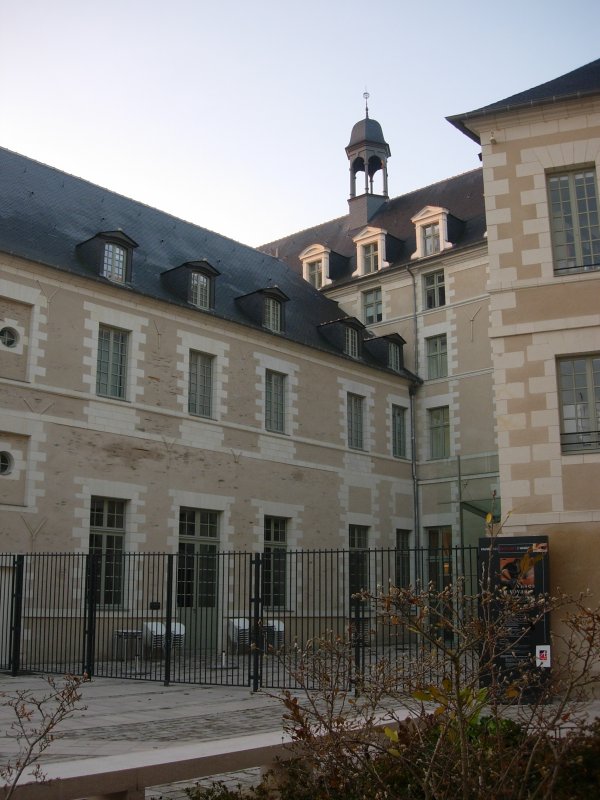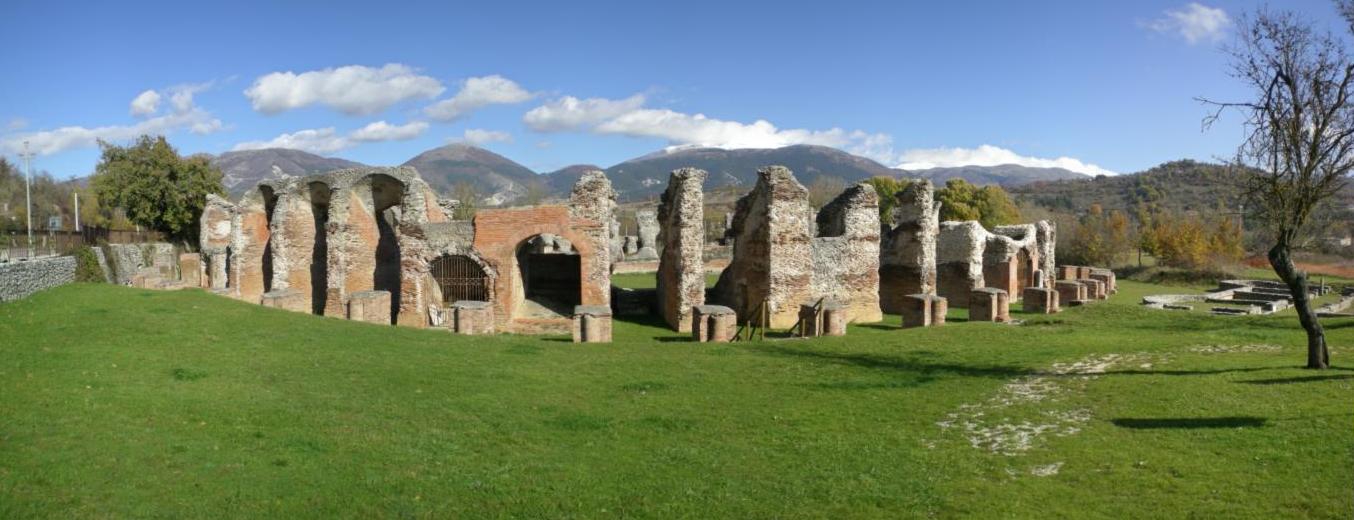|
The Death Of Tatius
''The Death of Tatius'' (French: ''La mort de Tatius'') is a 1788 history painting by the French artist Anne-Louis Girodet. Produced the year before the French Revolution, it is in the Neoclassical style. It is based on the mythical story of the Founding of Rome. It depicts the death of Titus Tatius, leader of the Sabines, while waging war against Romulus. It was entered in the Prix de Rome in 1788. Although Girodet failed to win that year, in 1789 he won the competition with ''Joseph and His Brethren''. Today it is in the collection of the Musée des Beaux-Arts in Angers Angers (, , ;) is a city in western France, about southwest of Paris. It is the Prefectures of France, prefecture of the Maine-et-Loire department and was the capital of the province of Duchy of Anjou, Anjou until the French Revolution. The i ....https://ow-mba.angers.fr/fr/notice/2013-22-10-romulus-faisant-tuer-tatius-5763818b-1a21-4706-84f4-437d8e50f381 References Bibliography * Levitine, George. ' ... [...More Info...] [...Related Items...] OR: [Wikipedia] [Google] [Baidu] |
Anne-Louis Girodet De Roussy-Trioson
Anne-Louis Girodet de Roussy-Trioson (; or ''de Roucy''), also known as Anne-Louis Girodet-Trioson or simply Girodet (29 January 17679 December 1824),Long, George. (1851) ''The Supplement to the Penny Cyclopædia of the Society for the Diffusion of Useful Knowledge'', C. Knight. was a French painter and pupil of Jacques-Louis David, who participated in the early Romantic movement by including elements of eroticism in his paintings. Girodet is remembered for his precise and clear style and for his paintings of members of the Napoleonic family. Early career Girodet was born at Montargis. Both of his parents died when he was a young adult. The care of his inheritance and education fell to his guardian, a prominent physician named Benoît-François Trioson, "''médecin-de-mesdames''", who later adopted him. The two men remained close throughout their lives and Girodet took the surname Trioson in 1812. In school he first studied architecture and pursued a military career.Polet, Jean-C ... [...More Info...] [...Related Items...] OR: [Wikipedia] [Google] [Baidu] |
Oil Painting
Oil painting is a painting method involving the procedure of painting with pigments combined with a drying oil as the Binder (material), binder. It has been the most common technique for artistic painting on canvas, wood panel, or oil on copper, copper for several centuries. The advantages of oil for painting images include "greater flexibility, richer and denser color, the use of layers, and a wider range from light to dark". The oldest known oil paintings were created by Buddhism, Buddhist artists in Afghanistan, and date back to the 7th century AD. Oil paint was later developed by Europeans for painting statues and woodwork from at least the 12th century, but its common use for painted images began with Early Netherlandish painting in Northern Europe, and by the height of the Renaissance, oil painting techniques had almost completely replaced the use of egg tempera paints for panel paintings in most of Europe, though not for Orthodox icons or wall paintings, where tempera a ... [...More Info...] [...Related Items...] OR: [Wikipedia] [Google] [Baidu] |
History Painting
History painting is a genre in painting defined by its subject matter rather than any artistic style or specific period. History paintings depict a moment in a narrative story, most often (but not exclusively) Greek and Roman mythology and Bible stories, opposed to a specific and static subject, as in portrait, still life, and landscape painting. The term is derived from the wider senses of the word ''historia'' in Latin and ''histoire'' in French, meaning "story" or "narrative", and essentially means "story painting". Most history paintings are not of scenes from history, especially paintings from before about 1850. In modern English, "historical painting" is sometimes used to describe the painting of scenes from history in its narrower sense, especially for 19th-century art, excluding religious, mythological, and allegorical subjects, which are included in the broader term "history painting", and before the 19th century were the most common subjects for history paintings. ... [...More Info...] [...Related Items...] OR: [Wikipedia] [Google] [Baidu] |
Musée Des Beaux-Arts D'Angers
The Musée des beaux-arts d'Angers is a museum of art located in a mansion, the "logis Barrault", place Saint-Éloi near the historic city of Angers, western France. Building The museum is part of the Toussaint complex, which includes the garden of Fine Arts, the David d'Angers gallery, the city library and the canteen. It displays a rich collection of art works acquired over the centuries on a total area of distributed as follows: * for permanent collections * for temporary exhibitions * for the public reception areas: lobbies, passing museums, auditorium, video room, coffee shop ... * for technical buildings Thanks to recent restoration the site combines history and development with the most modern presentation. The museum has been classified by the Journal des Arts Museum on 2010 as the best of western France and fourth museum in France (outside Paris). This ranking is due to a redesign of the museum's website and the richness and diversity of the exhibitions. History Af ... [...More Info...] [...Related Items...] OR: [Wikipedia] [Google] [Baidu] |
Angers
Angers (, , ;) is a city in western France, about southwest of Paris. It is the Prefectures of France, prefecture of the Maine-et-Loire department and was the capital of the province of Duchy of Anjou, Anjou until the French Revolution. The inhabitants of both the city and the province are called ''Angevins'' or, more rarely, ''Angeriens''. Angers proper covers and has a population of 154,508 inhabitants, while around 432,900 live in its metropolitan area (''aire d'attraction''). The Communauté urbaine Angers Loire Métropole, Angers Loire Métropole is made up of 29 communes covering with 299,500 inhabitants (2018).Comparateur de territoire INSEE Not including the broader metropolitan area, Angers is the third most populous Communes of France, commune in northwes ... [...More Info...] [...Related Items...] OR: [Wikipedia] [Google] [Baidu] |
Artist
An artist is a person engaged in an activity related to creating art, practicing the arts, or demonstrating the work of art. The most common usage (in both everyday speech and academic discourse) refers to a practitioner in the visual arts only. However, the term is also often used in the show business, entertainment business to refer to Actor, actors, Musician, musicians, Singing, singers, Dance, dancers and other Performing arts#Performers, performers, in which they are known as ''Artiste'' instead. ''Artiste'' (French) is a variant used in English in this context, but this use has become rare. The use of the term "artist" to describe Writer, writers is valid, but less common, and mostly restricted to contexts such as critics' reviews; "author" is generally used instead. Dictionary definitions The ''Oxford English Dictionary'' defines the older, broader meanings of the word "artist": * A learned person or Master of Arts * One who pursues a practical science, traditionally ... [...More Info...] [...Related Items...] OR: [Wikipedia] [Google] [Baidu] |
Neoclassical Style
Neoclassicism, also spelled Neo-classicism, emerged as a Western cultural movement in the decorative and visual arts, literature, theatre, music, and architecture that drew inspiration from the art and culture of classical antiquity. Neoclassicism was born in Rome, largely due to the writings of Johann Joachim Winckelmann during the rediscovery of Pompeii and Herculaneum. Its popularity expanded throughout Europe as a generation of European art students finished their Grand Tour and returned from Italy to their home countries with newly rediscovered Greco-Roman ideals. The main Neoclassical movement coincided with the 18th-century Age of Enlightenment, and continued into the early 19th century, eventually competing with Romanticism. In architecture, the style endured throughout the 19th, 20th, and into the 21st century. European Neoclassicism in the visual arts began in opposition to the then-dominant Rococo style. Rococo architecture emphasizes grace, ornamentation and asymm ... [...More Info...] [...Related Items...] OR: [Wikipedia] [Google] [Baidu] |
Founding Of Rome
The founding of Rome was a prehistoric event or process later greatly embellished by Roman historians and poets. Archaeological evidence indicates that Rome developed from the gradual union of several hillfort, hilltop villages during the Prehistoric Italy#Bronze Age, Final Bronze Age or early Iron Age Europe#Italy, Iron Age. Prehistoric Italy, Prehistoric habitation of the Italian Peninsula occurred by 48,000 Before Present, years ago, with the area of Rome being settled by around 1600 BC. Some evidence on the Capitoline Hill possibly dates as early as and the nearby valley that later housed the Roman Forum had a developed necropolis by at least 1000BC. The combination of the hilltop settlements into a single polity by the later 8th centuryBC was probably influenced by the trend for city-state formation emerging from ancient Greece. Roman mythology, Roman myth held that their city was founded by Romulus, son of the war god Mars (mythology), Mars and the Vestal virgin Rhea ... [...More Info...] [...Related Items...] OR: [Wikipedia] [Google] [Baidu] |
Titus Tatius
According to the Roman foundation myth, Titus Tatius, also called Tatius Sabinus, was king of the Sabines from Cures and joint-ruler of the Kingdom of Rome for several years. During the reign of Romulus, the first king of Rome, Tatius declared war on Rome in response to the incident known as The Rape of the Sabine Women. After he captured the stronghold atop the Capitoline Hill through the treachery of Tarpeia, the Sabines and Romans fought an epic battle that concluded when the abducted Sabine women intervened to convince the two sides to reconcile and end the war. The two kingdoms were joined and the two kings ruled jointly until Tatius' murder five years later.Livy, ''Ab Urbe Condita'', i. 9-14. The joint kingdom was still called Rome and the citizens of the city were still called Romans, but as a community, they were to be called '' Quirites''. The Sabines were integrated into the existing tribes and curies, yet Tatius is not counted as one of the traditional "Seven ... [...More Info...] [...Related Items...] OR: [Wikipedia] [Google] [Baidu] |
Sabines
The Sabines (, , , ; ) were an Italic people who lived in the central Apennine Mountains (see Sabina) of the ancient Italian Peninsula, also inhabiting Latium north of the Anio before the founding of Rome. The Sabines divided into two populations just after the founding of Rome, which is described by Roman legend. The division, however it came about, is not legendary. The population closer to Rome transplanted itself to the new city and united with the preexisting citizenry, beginning a new heritage that descended from the Sabines but was also Latinized. The second population remained a mountain tribal state, coming finally to war against Rome for its independence along with all the other Italic tribes. Afterwards, it became assimilated into the Roman Republic. Etymology The Sabines derived directly from the ancient Umbrians and belonged to the same ethnic group as the Samnites and the Sabelli, as attested by the common ethnonyms of ''Safineis'' (in ancient Gr ... [...More Info...] [...Related Items...] OR: [Wikipedia] [Google] [Baidu] |
Romulus
Romulus (, ) was the legendary founder and first king of Rome. Various traditions attribute the establishment of many of Rome's oldest legal, political, religious, and social institutions to Romulus and his contemporaries. Although many of these traditions incorporate elements of folklore, and it is not clear to what extent a historical figure underlies the mythical Romulus, the events and institutions ascribed to him were central to the myths surrounding Rome's origins and cultural traditions. Traditional account The myths concerning Romulus involve several distinct episodes and figures, including the miraculous birth and youth of Romulus and his twin brother, Remus; Remus' murder and the founding of Rome; the Rape of the Sabine Women, and the subsequent war with the Sabines; a period of joint rule with Titus Tatius; the establishment of various Roman institutions; the death or apotheosis of Romulus, and the succession of Numa Pompilius. Romulus and Remus According to ... [...More Info...] [...Related Items...] OR: [Wikipedia] [Google] [Baidu] |








